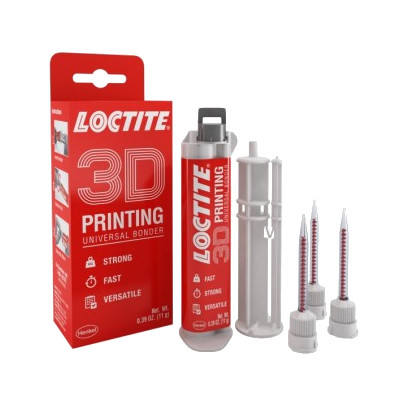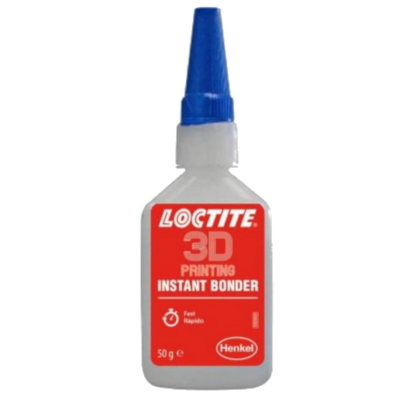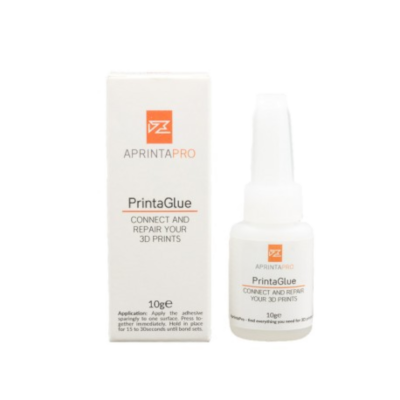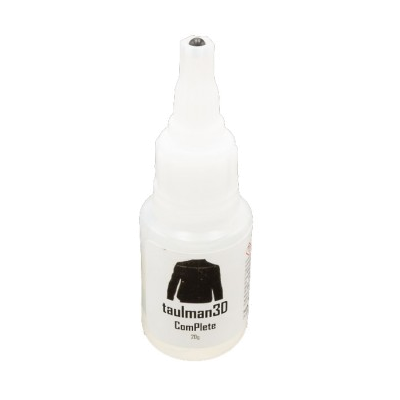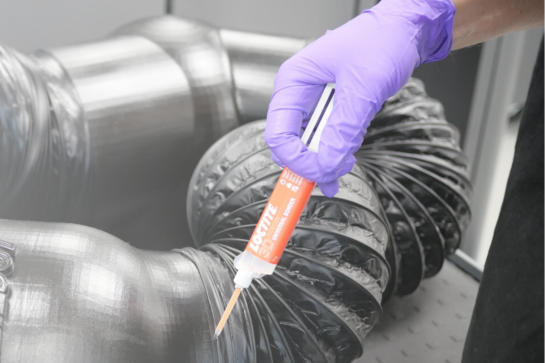

3D printer users always aspire to make increasingly complex and larger pieces, but often they are limited, not by their knowledge, but by their 3D printer or the incompatibility of making a piece in one part. The simplest and most economical solution is to make a piece in parts and then paste them. Below we present the types of adhesives, types of joints and recommendations for pasting parts successfully:
Types of adhesives
At the beginning of 3D FDM printing, conventional glues were used for the PLA and ABS solutions to glue this material together. These types of adhesives are in disuse because the union was unsuccessful in certain situations, such as in humid, cold environments or in cases where the pieces were exposed to vibrations. With the evolution of technology, specific adhesives for 3D printing have been developed to avoid the problems mentioned above, such as PrintaGlue, a glue with a drying time of 30 seconds and valid for most existing filaments. We can also find specific glues for nylon filaments, specifically the Taulman Complete. This product was developed because conventional adhesives did not penetrate the smooth and slippery surface that this material usually presents.
Finally, companies known internationally as LOCTITE, have developed specific adhesives for 3D printing and valid for all existing technologies: FDM, SLS, SLA, DLP and more. Its flagship products are the LOCTITE 3DP Instant Bonder, a cyanoacrylate glue that is ultra-fast (a few seconds) and has a single component; and the LOCTITE 3DP Universal Bonder, a two-component (cyanoacrylate / methacrylate) glue that is cured in a few minutes (3-6 min), ideal for gluing all types of pieces or even filling holes.
Types of unions
Once the adhesive that best fits the piece and the material has been chosen, it is necessary to study which is the best joining geometry between the parts. Normally, users make flat and parallel cuts to join pieces, but this type of union offers results of low adherence compared to other geometries. The recommended types of connections are shown in the following table:
 |
 |
 |
 |
 |
 |
|
| Joint | Butt | Scarf | Stepped scarf | Stepped lap | Tongue and groove | Saw tooth |
|---|---|---|---|---|---|---|
| Selt-Alignment | None | None | Better | Better | Best | Best |
| Bond Area | Good | Better | Better | Better | Better | Better |
| Stress Distr. | Good | Better | Better | Best | Best | Best |
| Joint | Selt-Alignment | Bond Area | Stress Distr. | |
|---|---|---|---|---|
 |
Butt | None | Good | Good |
 |
Scarf | None | Better | Better |
 |
Stepped scarf | Better | Better | Better |
 |
Stepped lap | Better | Better | Best |
 |
Tongue and groove | Best |
Better | Best |
 |
Saw tooth | Best | Better | Best |
Chart 1: Types of union. Source: LOCTITE
To facilitate the manufacture and subsequent joining of the parts of a piece must take into account the efforts that will support to choose the most favorable type of union and incorporate it into the design.
Recommendations
Like painting or surface treatment of a part, to glue parts of a piece or several pieces together, follow a series of recommendations.
The first step is always to clean the surfaces that you want to join and ensure that they are free of dust, grease, oils or resin without solidifying in the case of pieces made by 3D resin printing. For the previous step there are products such as LOCTITE SF 7063, which effectively remove all types of dirt. Once the surfaces are clean and dry, apply a layer of adhesive on one side to join and assemble the parts exerting a slight pressure to achieve full contact between the surfaces during the curing time of the adhesive. Finally, the excess adhesive must be removed before it solidifies or afterwards sanding.
Following the recommendations of this article, it is sure to increase its manufacturing power, obtaining larger pieces and complexity without problem. Do not hesitate to comment if you have questions and share in our social networks all the pieces and designs you make using the tips mentioned.

